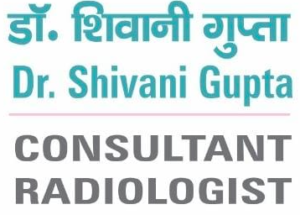Follicular Study
- Home
- Our Services
- Ultrasound
- Follicular Study

What is a Follicular Study?
The ovaries of a woman contain numerous sacs filled with eggs. They are called follicles. These follicles grow as the eggs mature. The dominant follicle releases one egg after around 15 days from the beginning of a menstrual cycle called ovulation. Also, ovaries release eggs alternatively every other month.
After ovulation, the egg moves through the fallopian tube. If there are any sperms already present, the egg fuses with one to form an embryo. Meanwhile, the uterus thickens and prepares for the fertilized egg. The embryo then attaches itself to the uterus wall to develop into a baby over the months.
Thus, a follicular study is a process to observe and track the growth and behaviour of the follicles. Also, it is essential to predict the possibility of fertilization.
When is it Done?
The scans for a follicular study will begin around the seventh day of your cycle and continue until you ovulate. Moreover, the Specialist gynecologist will decide how long it will be between scans after each sitting. Besides, scans are usually done on different days to track the growth and development of the eggs. Also, the scans are more frequent around the time of ovulation.
Who needs it?
Follicular study is suitable for women who have not been able to conceive after at least a year of having unprotected intercourse. Also, you might need a follicular scan in the following conditions:
- If your age is over 35, you may need this scan. That is to rule out any possibility of issues related to ovulation preventing your pregnancy.
- Suppose you have polycystic ovarian syndrome/ disease (PCOD) and go through irregular cycles of menstruation. That is when you have cysts in your ovaries that interfere with ovulation.
- You go through anovulatory cycles, where ovulation does not take place.
- Your doctor prescribed you fertility medications.
- Or, you are undergoing Intrauterine Insemination or In-vitro fertilization to produce more follicles.
What is the Procedure?
Depending on your doctor’s experience and the stage of your cycle, you may have an abdominal ultrasound or a transvaginal ultrasound. However, a transvaginal ultrasound is the most accurate method to perform a follicular study. Thus, you have to lie on your back with your legs up and bent during this procedure. A probe will be inserted into the vaginal canal by the ultrasonologist. As a result, images of the ovaries and follicles will be captured by ultrasound.
Furthermore, before the ultrasound scan, you must empty your bladder because a full bladder can affect the results.
How does a Follicular Study Work?
A follicular study is a series of vaginal ultrasound scans that take 5-10 minutes to complete. The follicles of your ovary begin to form on the ninth day of the cycle. Thus, the series of scans will continue until all follicles have vanished and ovulation has begun. Couples are then encouraged to engage in sexual activity. The study helps couples to conceive by allowing the sperm and egg to meet at the optimal time.
How many Scans are Needed?
Because the ovulation window is so large, each cycle may require 8 to 10 scans. The baseline scan will assist the doctor in determining the follicle’s starting stage, and its progress will be continuously monitored from there. The following scan will be booked in the same manner.
How is the Follicular Study Evaluated?
During the testing and evaluation, the size of the follicles is measured by the doctor. He also measures the thickness of the endometrium, the uterus’s inner wall. Besides, the clinician may also use another scan to check the blood flow to the follicle and endometrium. He will further tell you about what results are positive and negative. Furthermore, other follicle-related problems can also be detected in the scans.
- Identification of follicles that do not expand appropriately before rupturing.
- The thickening of the uterine lining during the time of the release of the egg.
- Follicles that do not develop or break at the appropriate time.
When to see a Doctor?
If the estimated window given by the doctors did not yield desired results, you might visit the doctor for further tests. Therefore, although a follicular study cannot help you directly to become parents, it may prove to be a successful step towards your parenthood journey.

